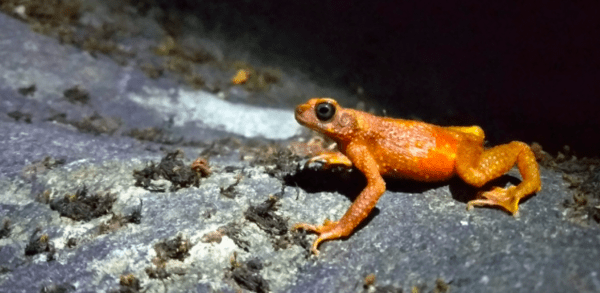Freshwater Garfish, also known as the Indian Gar or Gangetic Gar, is a freshwater fish species found in the rivers and lakes of South and Southeast Asia, including India. These fish are known for their long and slender bodies, which are covered in armor-like scales and have a characteristic elongated snout filled with sharp teeth. They are top predators in their habitat and primarily feed on smaller fish, crustaceans, and insects.
The freshwater Garfish prefers clear and slow-moving water bodies, such as lakes, pools, and backwaters of rivers. They are typically found in areas with dense vegetation or underwater structures such as rocks or logs, which provide them with hiding places and ambush points for hunting their prey. Although they can grow up to 1.5 meters (5 feet) in length in the wild, in captivity, they typically reach up to around 60 centimeters (2 feet).
| Serial No. | Characteristics | Description |
| 1. | Common name | Freshwater Garfish / Needle Fish |
| 2. | Scientific name | Enentodon cancila |
| 3. | Colour | Brownish-grey with dark brown spots on its body |
| 4. | Average length in m | Can grow up to 10 cm in length |
| 5. | Average weight in kgs | Typically weighs less than 1 kg |
| 6. | Found in river systems of | Found in fast-moving streams and rivers in Southeast Asia |
| 7. | Habitat | Prefers rocky and gravelly substrates with strong water currents |
| 8. | Any special characteristics | Used as bait in fishing |
Features
Freshwater garfish in India, also known as the Gangetic garfish or the Indian needlefish, have some distinct physical features that set them apart from other freshwater fish species. They have a long, slender body with a pointed snout filled with sharp teeth. The body is silver-grey in color with a bluish-green back and white underbelly. Their dorsal fin is located near the rear of the body and is followed by a long, slender tail. The Gangetic garfish can grow up to 60 centimeters (24 inches) in length, but the average size is around 30 centimeters (12 inches). These fish are found in rivers, lakes, and estuaries across India, and are known for their jumping ability, often leaping out of the water to avoid predators. Gangetic garfish play an important role in the freshwater ecosystem of India and are also valued by anglers for their sporting qualities.
Habitat
The Gangetic garfish is a freshwater fish species found throughout the Indian subcontinent. They are typically found in slow-moving or stagnant waters such as rivers, streams, lakes, and estuaries. The species is also known to inhabit brackish water and can tolerate a wide range of salinities. The Gangetic garfish prefers shallow, weedy areas with sandy or muddy bottoms and submerged aquatic vegetation. They are often found near the water’s surface, where they feed on small fish and crustaceans. The Gangetic garfish is an important part of the freshwater ecosystem in India and can be found in many major river systems, including the Ganges, Brahmaputra, and Indus.
River System
The Gangetic garfish is found in several river systems in India, including the Ganges, Brahmaputra, and Indus rivers. These river systems are some of the largest in the country and support a diverse range of aquatic species. The Ganges river system, in particular, is home to a wide variety of fish species, and the Gangetic garfish is one of the most commonly found species in this ecosystem. In addition to these major river systems, Gangetic garfish can also be found in other rivers, streams, lakes, and estuaries throughout the Indian subcontinent, making them a widespread and important freshwater fish species in the region.
Threatened Status
Enentodon cancila is currently listed as “Least Concern” on the IUCN Red List of Threatened Species. This means that the species is not considered to be facing a high risk of extinction in the wild, based on available information. However, like many freshwater fish species, Enentodon cancila faces various threats to its survival, including habitat loss, water pollution, overfishing, and the introduction of non-native species. These threats could impact the species in the future if not properly managed, and conservation efforts may be needed to ensure its long-term survival.





